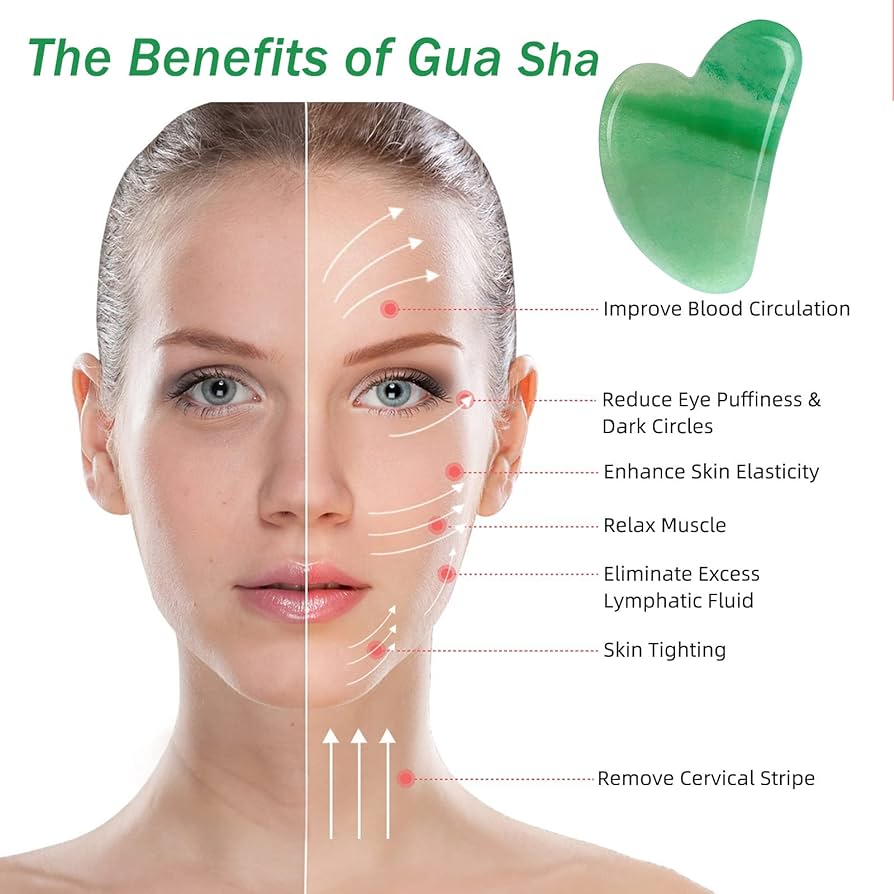Types of Gua Sha
You may come across a few different forms of gua sha. They include:
Traditional Gua Sha
This is the traditional Chinese medicine technique in which a practitioner (often an acupuncturist) gently scrapes areas of your body with a smooth-edged tool. The aim, from a conventional medicine view, is to potentially reduce systemic inflammation, improve circulation, and/or increase range of motion.
Facial Gua Sha
Some people practice gua sha on their face to relieve tension, puffiness, inflammation, and even sinus pressure.
Possible Benefits of Gua Sha
There’s still a lot we don’t know about gua sha and how it works. However, research suggests that there are many potential benefits of the practice, including:
Help Relieve Muscle Pain
Gua sha helps promote blood flow to the area being scraped, which can help reduce pain and stiffness.
For example, adults with chronic neck pain saw significant improvements in pain after a single gua sha treatment. Plus, those who had received gua sha still felt less pain one week after treatment.
Help Reduce Perimenopause Symptoms
Perimenopause, or the transition to menopause, may cause women to experience hot flashes, sleep problems, and mood changes, Hormone therapy and other treatments can help with these symptoms, but pairing them with gua sha may also help mitigate discomfort.
For example, one study from China of 80 women, published in 2017 in Menopause, found that adding a weekly 15-minute gua sha treatment to their conventional treatment led to greater reductions in hot flashes, insomnia, fatigue, nervousness, and headache after eight weeks, compared with conventional treatment alone.
Help Improve Diabetic Neuropathy
Diabetic neuropathy is a type of nerve damage that can affect people with diabetes. It occurs when high levels of blood sugar (glucose) injure nerves throughout the body, most commonly in the legs and feet.
Gua sha may help lower the severity of diabetic neuropathy. significant improve sensory function, balance, nighttime burning sensations in the legs and feet, and plasma glucose levels (a common method of diagnosing and monitoring diabetes) after 12 weekly gua sessions.


